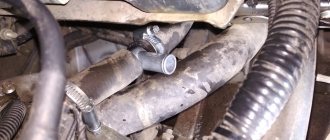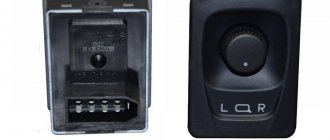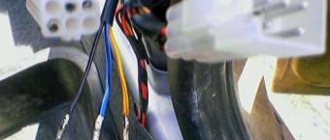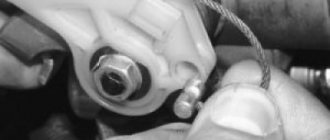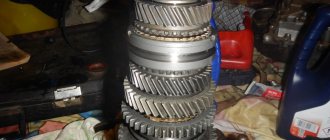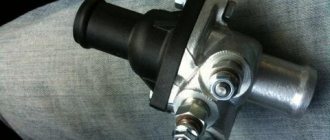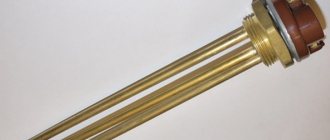The most effective tool that helps combat difficulties in starting the power plant of cars can be called pre-heaters. They operate from a 220 V network. Thanks to them, the cooling liquid is heated before starting the engine. The automotive device market offers similar units from different manufacturers. The most popular among car enthusiasts are the devices of the Chinese company Longfei. You can install them yourself.
Pre-heaters are used to heat the coolant before starting the engine.
Installation instructions for Longfei heater
— Please note that you do not need to leave the pre-heater on all night; we recommend using 220V timer sockets, which will turn on the heater at the appointed time (available for sale on our website);
— When inserting into the cooling system, keep in mind that it is advisable to place the heater below the interior space heater radiator. This prevents air from entering.
— You need to embed the longfey into the cooling system, at the point where the fluid passes from the cylinder block to the heater.
— Attach the pre-heater so that it does not hit other parts while driving.
— Connect the heater to a normal power supply with grounding to avoid short circuits.
Description of the method of sequential installation of the heater on the engine:
— The heater must be embedded into the cooling system, where the liquid goes from the interior heater to the cylinder block (Fig.-1). As a rule, this section can be traced along hoses about 20 mm thick running from the car engine towards the car interior (with a running, warm car and the heater fan on, the inlet hose is hotter than the outlet hose.
— The place for installing and fastening the heater must be chosen lower, relative to the radiator of the interior heater, in order to prevent airing of the heater. For the sake of convenience and versatility of placement, it is recommended to use additional hoses for installation in order to maintain the integrity and length of the original ones.
— The operation of the Longfey heater does not depend on the installed position, which expands the list of installation locations. It is better to mount the heater to the body of the car; if this is not possible, then find other possible places, considering and eliminating the possibility of fire of the heater, hoses and power supply wires (no need to mount it close to the exhaust manifold). It is also necessary to exclude the possibility of the heater hitting other parts of the car while driving.
As we have already said, before the installation process, it is necessary to determine the input and output hoses of the interior heater (you can use the diagram in the car manual), or by the difference in temperature of the hoses when the engine is running and the heater fan is on, then select the installation location of the heater and calculate the distance for the hoses.
Drain the coolant from the cooling system or clamp the pipes with clamps (in the installation area). Remove the hose through which the coolant flows from the interior heater (stove) directly to the engine. Using fittings, connect the two prepared hoses to the free coolant outlets. Attach the heater to the free hose outlets, observing the direction of flow in the circuit and the direction of pumping liquid in the heater itself, and then fill the cooling system with coolant.
According to the diagram below (Fig.-2), a similar method is presented for installing a heater in series, where the coolant goes from the cylinder block to the heater heater (parallel pipe of the heater heater.
READ How to activate the MTS Bon Voyage service
Important. Make sure that the entire cooling system is filled with liquid, since airing the interior heater circuit can lead to failure of the heater. Do not start the heater immediately after installation; it is necessary that the coolant fills the entire cooling system, and for this you need to let the engine run for some time. When the engine is warm, the air from the heater should be hot!
One gets the idea that the design of the heater can create a slight resistance to the flow of coolant when the engine is running, but according to numerous reviews, the effect of this factor is negligible in relation to interior heating. And in our opinion, there is practically no resistance.
It is necessary to ensure that the stove tap is open while the heater is operating, i.e. The temperature regulator in the cabin was at maximum.
The parallel method of installing a heater, relative to the one described above, seems more complicated.
The parallel installation of the Longfei heater is characterized by the release of a small circle of circulation of the coolant from the resistance of the heater, at such moments when the internal cross-section of the interior heater circuit is clearly larger than the internal diameter of the heater fittings. This type of installation requires more sophisticated engineering solutions in the field of fluid dynamics and plumbing.
Source
Connection methods
Since the instructions included with the devices are poorly translated, and the diagrams depicted in them are not very clear, many simply cannot figure out how to properly install the device with their own hands.
There are several ways to install the device on your car. The first connection diagram is serial, and it is shown below:
Sequential installation diagram of the Longfey heater
It is more suitable for models with a parallel arrangement of terminals, since the device is inserted into only one pipeline of the system - supplying antifreeze to the interior heater radiator.
This scheme is quite simple, and to install it you need:
- Find the required pipe (on a warm engine, find the pipelines leading to the stove and check the degree of their heating with your hand. The connection is made into the warmer pipe);
- Drain the coolant;
- Choose a place to mount the heater on the engine or body (away from highly heated elements). If necessary, you can make a mounting bracket;
- Cut the pipeline and install the device into this cut (it is important not to confuse the heater leads: we connect the section leading from the engine to the water inlet, and the section leading to the heater radiator to the drainage outlet);
- Secure all connection points with clamps;
- Secure the device;
- Fill with coolant and check connections for leaks;
- Lay the heater cable along the body and remove the plug to a convenient place for connection. The wire must be secured;
With this connection diagram, for normal operation of the device, you should always keep the coolant supply valve to the heater radiator open.
The second connection method is parallel. It is more suitable for models with perpendicular leads. A diagram of such an insert is presented below:
Parallel installation diagram of Longfei heater
This scheme is somewhat more complicated in terms of implementation. You will also additionally need to have:
- Pipelines of appropriate length and diameter;
- Fitting for connecting the pipeline to the cylinder block (installed instead of the drain plug);
- Tee (for inserting into the pipeline);
- Clamps.
To install the heater in parallel, do this:
- Drain the coolant;
- We unscrew the drain plug on the cylinder block and screw in the fitting instead;
- We cut the pipe leading from the radiator to the engine (upper) and install a tee in this cut;
- Choosing a place to install the heater;
- Using prepared pipelines, we connect all the elements into one system (we connect the water inlet to the fitting, and the water outlet to the tee);
- We tighten all connections with clamps;
- We attach the heater;
- Fill with coolant;
Now, as for connecting the Longfey heater to an outlet. It is better to do this through an adapter with a timer, which will allow you to set the time to turn the device on and off.
If an extension cord is used to power the device, the wiring in it must be designed for the load created.
Finally, we note that even though Longfei heaters are manufactured in China, they are quite reliable products that can work for a very long time. The only malfunctions they have are usually associated with burnout of the wires inside the device. Fixing such breakdowns is not difficult.
Installation of Longfei heater
Probably everyone knows what it’s like to start a cold car in winter.
Moreover, if there is severe frost outside and this often causes problems with starting and warming up the car. Today, engine preheaters - Longfei - help solve these problems. Depending on the distinguishable power, he (Long Fey) is faster or, on the contrary, slower, i.e. warms up the fluid in the engine compartment of your vehicle at different rates.
Longfies are divided into powers - 1.5 kW, 2 kW and 3 kW. The price of these useful units is proportional to their power.
see also
Comments 70
Good day. How is your Longfei doing?
The pump died, and I couldn’t take it apart (I was sick, I was nursing a child... But the ten works)
Good day. How is your Longfei doing?
Longfey is also standing, has been in operation for 2 months, today it’s 32 degrees and heated the car to 60 degrees in 40 minutes
Hello! How is Longfei feeling? I think this weekend I’ll also put it in reverse like you did.
Hello!) Just this morning the pump on the Moonfair stopped working (Probably antifreeze got in there somewhere, they say this is their sore spot... I’ll take it apart... If you install it, take it apart right away, seal it... And it’s a cool thing, convenient...
I have a stove at the inlet and above the engine www.drive2.ru/l/8378967/, and everything works great, this winter it will be 3. And what kind of temperature do you have that in 30 minutes the engine only warmed up to 40 degrees? I plug the timer into the socket, the socket turns it on at 7-00, at 7-30 I come and the engine is already 50 degrees and this is in -25 frost.
I don't know what the installation instructions say, but this is an incorrect connection. As far as I know, heated antifreeze should circulate in the cylinder block. Therefore, the incoming fitting must be installed instead of the plug on the fourth cylinder, and the outgoing fitting is the outlet to the stove through a tee.
Yes, of course in the block. And with my connection, where does it circulate?)))
With your connection, there is heat loss from the heater radiator. When the engine is running, the heater interferes with the operation of the stove, but you know that yourself.
Of course, there are losses, the stove is in a small circle, and there is no faucet like on the UAZ or Tavria, so we lose time in warming up with the heater, and we also warm up the radiator of the stove naturally, but with the bonus of immediately warm air into the cabin at start-up. But it doesn’t interfere with the operation of the stove, the insert is already at the outlet of the stove... I don’t know for sure, but so far I haven’t noticed a deterioration in the operation of the stove, as it warmed up normally, it still heats up... I think everything is fine. Although those who installed stoves at the entrance also did not notice any difference in temperature... something like this... but I didn’t want something with a lanosopech at the entrance... if at the entrance, then only through the valve and tees would be more correct...
How is this stuff blown through the mouth? have you tried it? is there an obstacle?
))) Didn’t blow) The obstacle is minimal enough that it can be neglected... the manufacturer states... writes that it does not interfere with the fluid flow when the internal combustion engine is running)
How is this stuff blown through the mouth? have you tried it? is there an obstacle?
There is no obstacle there, it is only blown on the way. There is simply a small impeller that pushes the antifreeze, it does not interfere with the flow at all. I have a pipe at the entrance to the cut from the block to the stove, everything works great and has been for many years.
By the way, no matter how it is, this thing can kill if it starts to pierce something good! And this is not a joke, the car is on rubber! Be sure to ground the outlet or not touch the car after turning it on, which is basically impossible! This is not a joke
Let's look at 2 ways to install the Longfei heater
There are two ways to embed longfey, parallel and sequential. Which one to choose? We will pay attention to the advantages and disadvantages of each of them, and you choose which one is closer and more rational to you.
— Parallel method of installing Longfei
Parallel installation of the Longfei preheater is considered more labor-intensive than sequential installation. Due to the release of the small circulation circle of antifreeze from the resistance of the heater. The installation conditions for this method must be supported by technical skill and a certain amount of knowledge on hydrodynamics and auto mechanics on your part.
Difficulties encountered during installation:
Four parallel heater installation schemes:
Method No. 1
1 - engine; 2 - radiator; 3 — heater radiator; 4 - pump; 5 — thermostat; 6 — upper pipe; 7 - lower pipe; 8 — “Lounfey” heater; 9 - tee; 10 - valve.
Method number 2
1 - engine; 2 - radiator; 3 — heater radiator; 4 - pump; 5 — thermostat; 6 — upper pipe; 7 - lower pipe; 8 — “Lounfey” heater; 9 - tee; 10 - valve; 11 - drain plug.
Method number 3
1 - engine; 2 - radiator; 3 — heater radiator; 4 - pump; 5 — thermostat; 6 — upper pipe; 7 - lower pipe; 8 — “Lounfey” heater; 9 - tee; 10 - valve.
READ How to connect an exercise bike to the network
Method number 4
1 - engine; 2 - radiator; 3 — heater radiator; 4 - pump; 5 — thermostat; 6 — upper pipe; 7 - lower pipe; 8 — “Lounfey” heater; 9 - tee; 10 - valve; 11 - drain plug.
— Sequential method of installing Longfei
This method is the “embedding” of the Longfei heater as an additional line (pipe) equipped with a heating element and a pump.
Attention: check that the entire cooling system is filled with coolant. The heater may fail if air is present. After all the coolant has filled the cooling system, the engine needs to run for a while and then the heater can be operated. When the engine is warm, the air streams from the heater must be hot!
Advantages and disadvantages
On the one hand, it is easy to install and use, and on the other hand, it creates little resistance to the flow of coolant when the engine is running. It is important not to miss the moment and make sure that the “Stove” tap is open during the heater operation - in simple words, the temperature control in the cabin is at maximum.
A little more about Longfey
Longfei heaters were created several years ago. Delivered to the European and Western car markets, they proved themselves to be excellent. When the turn of deliveries came to Russia, they were presented at the annual 18th International Exhibition of Spare Parts, Automotive Components and Equipment “MIMS Automechanika Moscow 2014”.
Source
What's the result?
As you can see, the presence of a household outlet in the garage or in the place where the car is located is a strong argument in favor of installing an electric pre-heater. This solution will reduce engine wear during cold starts, create comfortable operating conditions for the machine in winter, save fuel and warm-up time.
Any car, even if it is made of iron, endures winter even harder than you and I. According to experts, every cold start - and in the absence of a heated garage this is almost every day - reduces the service life by 500 km. The lower the temperature outside, the more difficult it is to solve this problem, not to mention being inside the cabin, when it seems that you are about to freeze to the seat.
The inexpensive Longfei electric pre-heater will help you avoid cold starts once and for all. It works on the principle of a conventional boiler - being integrated into the cooling system, when turned on, it warms up the engine by heating the antifreeze. The manufacturer has tried to eliminate the shortcomings of competitive models in new modifications, so the unit is gradually winning the hearts of motorists thanks to a large number of advantages.
Description and installation of the “Lunfey” heater on a VAZ
One of the most effective means for combating difficult starting of a car’s power plant is pre-heaters, operating from a 220 V network and ensuring warming of the coolant before starting the engine. The car accessories market offers such devices from a variety of manufacturers, including Chinese ones.
Long Fei devices have gained wide popularity among car owners.
These pre-start devices, despite the fact that the manufacturer is Chinese, cope with the task quite well, and the installation of the Longfey heater does not require changes to the design of the power unit.
Positive and negative sides
The device has both pros and cons.
The positive aspects of Longfey heaters include:
- small sizes;
- the presence of a pump helps to evenly warm up the antifreeze in the system, while using forced circulation;
- as soon as the system heats up to the required temperature, the heater turns off;
- The range of models is wide, which will help you choose a device for absolutely every car;
- Connecting such a heater will not be difficult, so there will be no need to redo the motor.
Despite all the positive aspects, there are still disadvantages:
- To connect the device, you must have a 220 V socket; if the car is located far from home, you will not be able to use the device;
- it is necessary to follow safety rules during operation;
- the breakdown can only be detected when the car is started.
Heaters "Lunfey". Design Features
The manufacturer offers a choice of several device models with different performance indicators. This allows you to choose a heater for almost any car - from a city runabout to an SUV or truck. Despite the fact that there are several types of devices, the heaters are built according to the same principle - they are all tank type with forced circulation of coolant, although they look different in appearance.
The device of the Longfey heater implies the presence of:
The heater is electric, but it works with liquid. To prevent contact of electrical appliances with antifreeze, this type of housing is used. It consists of two halves separated by a partition. The cavity through which the antifreeze passes is completely isolated from the one in which the electrical elements are placed. But at the same time, the heating element and the pump impeller go into it. The liquid enters the heating tank through the terminals (supply and discharge) located on the housing cover.
Device Features
Motorists are offered a wide selection of vehicle models that differ in their performance indicators. This is very convenient, since it becomes possible to select the necessary device for absolutely every car, be it a jeep or a sedan.
It is worth considering the fact that all heaters have the same structure. They are of a reservoir type and have a function such as forced circulation of coolant. Everyone's appearance is different.
The Longfey device has:
- composite body;
- heating pump;
- thermostat;
- electric type pump.
It is advisable to connect the Longfei heater to a high-quality 220V network
The electric heater exhibits activity directly with the liquid. To avoid problems and contact of electrical devices with antifreeze, a specified type of housing is actively used, which consists of two components. They are separated from each other by a partition.
Antifreeze passes through a special recess. It is completely isolated from the one that contains the power supply elements. The heating device and the pump impeller are connected to this recess. The heating liquid enters the tank through the supply and discharge terminals. They are located on the body of the device.
In this video, we invite you to familiarize yourself with the design and general characteristics of the Longfei engine heater:
Models and their characteristics
Longfey electric heaters are divided into series. The models included in each of them differ in performance characteristics.
The manufacturer offers customers a choice of series:
"Little Q"
Heaters of this series have a square shape with parallel pins. In terms of power they come in 1.5 kW, 1.8 kW and 2.0 kW. The pump capacity for all models is 8 l/min. Designed for insertion into a small circle of the cooling system. Installed in a small circle of the cooling system;
READ How to connect wifi to psp 1000
"Little Dragon"
Models in this series are rectangular, the terminals are located perpendicularly. It includes three models, identical in power and performance to the previous series;
"Decepticon"
A series of powerful rectangular heaters (2.0 kW, 2.5 kW and 3.0 kW) and perpendicular pin arrangement. At the same time, their pump performance is still the same 8 l/min;
Includes only one model - 3 kW. This heater has a rectangular shape with terminals installed perpendicularly. Electric pump capacity – 8 l/min. It is placed in a small circle of the system;
"Brothers"
The series also consists of one 3-kilowatt barrel-shaped model. Its leads are installed perpendicularly, the pump pumps 8 l/min;
In general, all models differ from each other only in the power of the heating element and the shape of the body.
Types of Longfey models
The engine heater is divided into several series. Each model that is included in the series has certain operating characteristics.
You should pay special attention to the engine heater models, as each model has its own unique characteristics
The manufacturer offers the following series:
- Little Q features a square shape that contains parallel placement of taps. Power can range from 1.5 to 2 kW. The pump has a total output of 8 l/mil. Such an electric heater can be embedded into the smallest cooling circle.
- Little Dragon - these electric heaters have a rectangular shape, the leads are located perpendicularly. There are 3 models in the series, which in their efficiency and power practically replace previous devices.
- Decepticon are high power heaters that have a rectangular shape. Available for 2, 2.5 and 3 kW. The terminals are perpendicular. But as for the pump power, it is the same - 8 l/min.
- King - this series contains only a single 3 kW model. This heater has a rectangular shape, the terminals are perpendicular. The electric pump operates with a power of 8 l/min. It can also be installed in a small circle of the system.
- Brothers - This series also contains only one 3 kW model. The shape of the device resembles a barrel. The leads are perpendicular, the pump operates at 8 l/min.
Basically, all devices in the series differ only in heater power and housing type.
